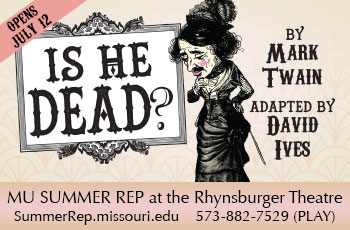The good news is bad people are outnumbered. The bad news is good people don’t always act.
For every person being excessively aggressive toward someone, there are 20 others who would never behave in such a way, said Danica Wolf, coordinator of MU’s Relationship and Sexual Violence Prevention Center (RSVP).
“Good news No. 1: We outnumber them,” Wolf said. “Good news No. 2: We know what to do and how to do it.”
It’s the second point that causes some handwringing among bystanders.
On June 27, Wolf led a seminar for employees in Memorial Union called “Standing Up Against Sexual Harassment and Violence.” The seminar was part of RSVP’s bystander program, which encourages people to act when they see someone in a situation that could lead to sexual assault or some other type of violence. Similar sessions are given to students in Summer Welcome, ROTC, residence halls, Greek houses and on sports teams.
In the 1960s, studies showed that someone is less likely to intervene in an aggressive situation when other people are present to help. At the same time, people are socially conditioned not to act if no one else acts.
People rationalize that it’s none of their business. They don’t want a physical altercation. They are introverts and don’t like confrontation. They fear retaliation and embarrassment.
The good news is that the calcifying bystander effect can be overcome.
Green Dot
Green Dot is a bystander program that teaches people the signs to look for when something isn’t right and how to take action. Five years ago, MU started Green Dot after learning about its use at the University of Kentucky.
In the RSVP office in the Student Center, a campus map as big as a window hangs on a wall speckled with red dots and a handful of green dots.
Green dots exist because of red dots. Red dots signify acts of aggression toward another person. Green dots represent bystander intervention.
Green dots are placed on the map to show where students and employees intervened to diffuse a dangerous situation. MU students and employees report the bystander acts on RSVP’s website or on an office form.
The idea is for green dots to replace the map’s sea of red dots, an imagined number of unreported violent acts on campus.
Bystander action is similar to the notion of a designated driver, with a third party perpetrator thrown into the mix. It is people looking out for people.
The Three D’s
On college campuses, bystander programs emphasize watching out for situations that might lead to unwanted sexual situations. Included is “any sexual contact that lacks consent and/or capacity to give consent,” Wolf said. A scenario might be an alcohol-fueled party, a tipsy woman and an aroused man leading her to a bedroom to take advantage of her.
The situations are not uncommon. One in five American women between ages 18 and 24 experience sexual assault or attempted sexual assault, according to the Centers for Disease Control and Prevention. Men are also not immune to being victims.
Wolf explained three ways to respond to a red dot scenario:
Direct: physically breaking up a fight or drunken situation, taking the arm of a potential victim and leading them away
Delegate: calling 911, notifying a club bouncer, seeking aid from a friend or stranger
Distract: shouting something that interrupts the moment, talking to the perpetrator to diffuse the situation
Wolf said that when she sees two people fighting, she does not step between them. She does not act directly. She delegates, distracts or both. Wolf overcomes the bystander effect with bystander action.
“Violence will not be tolerated,” Wolf said. “Everyone is expected to do their part.”


